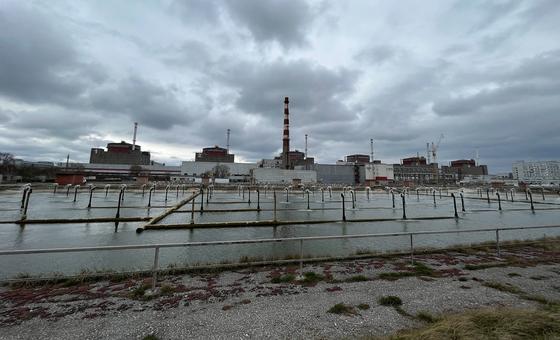Thousands of civilians in Ukraine are in danger on the frontline, after the apparent destruction of a huge dam whose reservoir is used to cool the Zaporizhzhya nuclear power plant (ZNPP), UN humanitarians said on Tuesday.
The UN Office in Ukraine tweeted that “thousands of people in Ukraine are in peril” following the major breach in the Soviet-era Kakhovka dam and hydroelectric plant, on the country’s largest river, the Dnipro, in the southeast, with video showing torrents of water cascading through.
The Ukrainian and Russian governments blamed each other for launching an attack on the facility – according to news reports – which is under Russian control, on the southern and eastern side of the river, while Ukrainian forces control territory along the opposite bank.
Thousands of people have already been reportedly evacuated, with towns downstream inundated with water.
Misery compounded
Long-term, “many risk being left homeless and in desperate need, compounding the misery Ukrainians face amid Russia’s full-scale invasion”, said the UN Office.
The UN human rights office, OHCHR, said that civilians’ rights to housing, health and livelihoods, along with access to clean water and a health environment, were all at risk, calling for a full investigation into the disaster, and accountability.
Nuclear plant concerns
According to the UN’s nuclear watchdog, IAEA, the damage to the Nova Kakhovka dam in eastern Ukraine has already led to a “significant” reduction in the level of the reservoir that supplies the ZNPP.
IAEA chief Rafael Grossi warned that the “absence of cooling water in the essential cooling water systems for an extended period of time would cause fuel melt and inoperability of the plant’s emergency diesel generators”.
‘No immediate risk’
While there was no “immediate risk” to the plant’s safety, as the supply of cooling water from the reservoir “should last for a few days”, the agency’s monitors present at Zaporizhzhya, which is occupied by Russia but operated by Ukrainian civilians, continue to monitor closely the rate at which the reservoir level is falling.
Mr. Grossi also said that a “large cooling pond” next to the ZNPP could potentially provide an alternative source of water, which Ukrainian authorities confirmed later, according to news reports. But he insisted that it was “vital” that this cooling pond remains intact.

